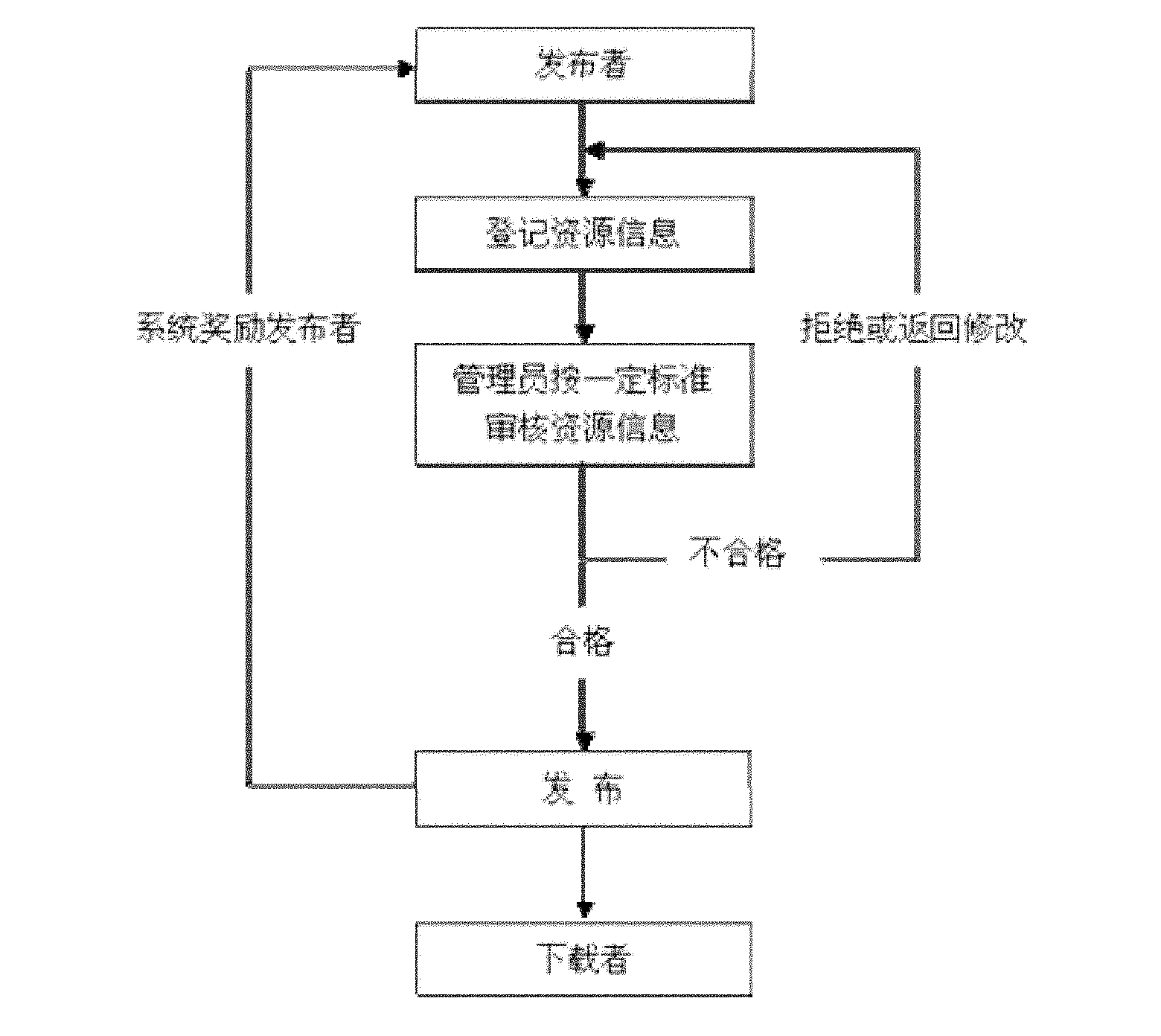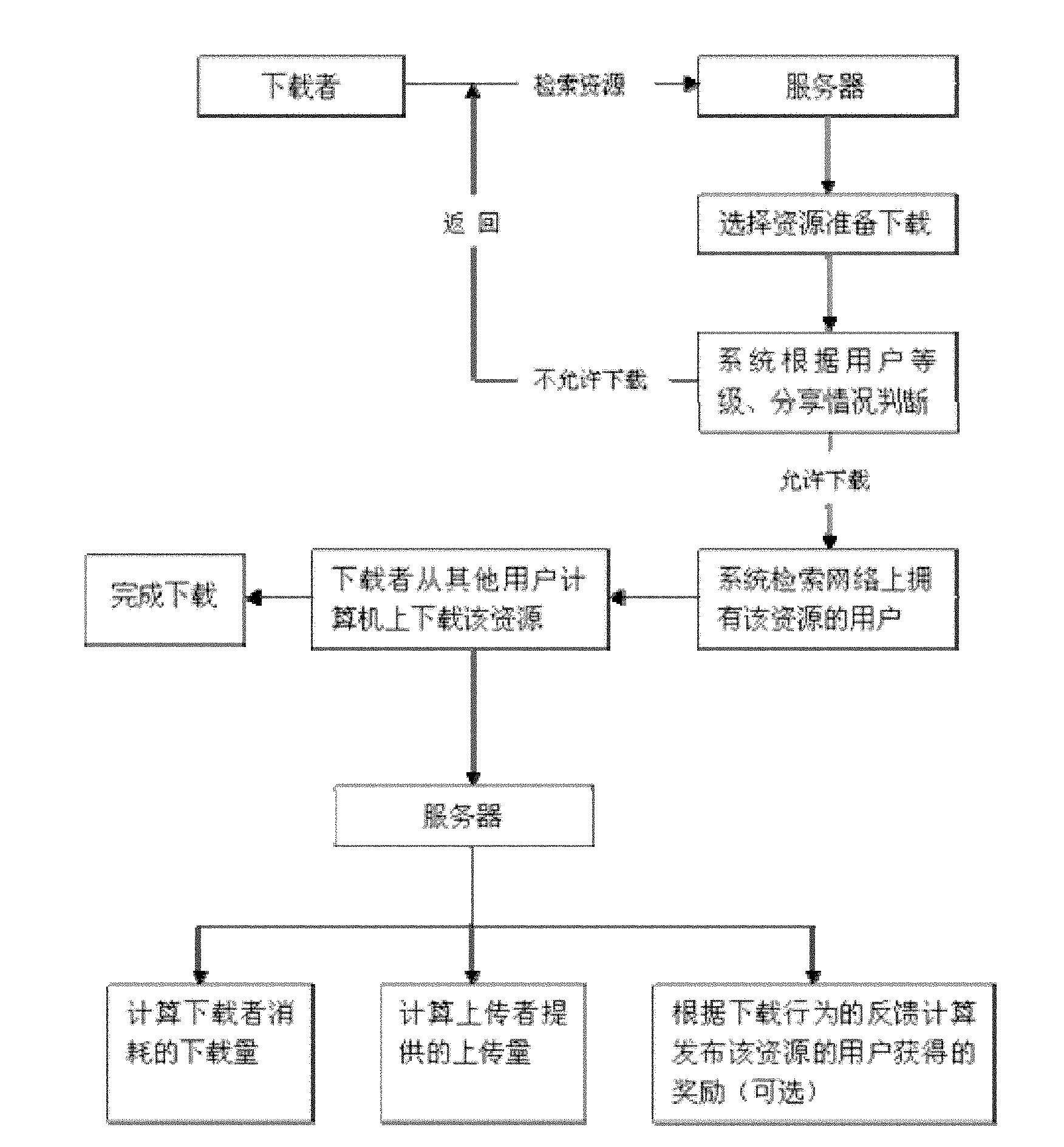[0002] At present, people's dependence on
the Internet and digital information has reached a
very high level. People query, disseminate, share and obtain digital information through the Internet almost every day. However, due to the limitation of network bandwidth and lack of
effective management, the current network resources Sharing, especially the sharing method of digital resources with both large
byte count and personalized characteristics is not perfect enough. The following uses the sharing and
dissemination of digital images as an example to illustrate the current problems in
digital file sharing:
[0003] The current
digital image sharing method is mainly based on a picture sharing service platform composed of one or several servers. This platform often exists in the form of a website. Users who publish pictures upload pictures to this platform, and other users browse and download them on this platform. Pictures, but the problem with this central
server-style picture sharing method is: a large number of users uploading and downloading pictures at the same time will put a huge pressure on the server bandwidth and the calculation of the
central processing unit, which makes users feel the speed when browsing pictures. Very slow, usually under the pressure of cost, the website's solution to the above problems is to limit the size and quality of the picture, but this limitation will lose the image effect; the opposite aspect is that from the demand Speaking from the perspective of
graphic design or personal interest, people have higher and higher overall requirements for images. These requirements mainly include image artistry,
clarity, resolution, etc., and the
clarity and resolution of images The requirements of the requirements will inevitably lead to an increase in the number of picture bytes; technically speaking, the pictures taken by ordinary digital SLR cameras and high-end
consumer cameras for household use have exceeded 12 million pixels, and the number of bytes exceeds 5MB. The
byte count of a group of photos may exceed 100MB or even GB. For the sharing of such high-definition images, the method of coordinating everything through a central server obviously cannot meet people's needs
However, in current P2P websites, publishers generally need to register to avoid publishing illegal content, and downloaders basically do not need to register, or even after downloaders register, their download rights are not significantly different from those of non-registered users, which leads to the current P2P websites do not have feasible measures to
restrict users' download behaviors, causing many users to "run away after downloading" here, unwilling to participate in contributing upload traffic, which is not conducive to the
sustainable development of the website
[0006] Another challenge encountered by the above-mentioned P2P sharing method is that, as opposed to the above-mentioned format resources, there are other types of resources that people need to share, such as photo atlases and
digital video files with certain themes created by ordinary users. The sources of resources are diverse, usually only spread in a small area, the level of creation is uneven, the content is uncertain and unpredictable, and most downloaders cannot accurately know the specific content of the resource through the introduction of the title or index. For example: the resource has a strong personal color in terms of its content. Even if it is for different photo atlases of the same scenic spot, the contents of the photo atlases are also different and have different styles due to factors such as shooting angles and shooting skills. , similarly, digital resources that meet the above characteristics are called personalized resources
Obviously, for this kind of personalized digital resources, in order to avoid time-consuming and labor-intensive downloading and then discovering that the resources are not what you need, you must know enough information (such as definition, resolution, and best) before downloading. There are also evaluations by professionals) are necessary, but the current universal review standards for P2P websites cannot meet this requirement. Due to the
workload brought by review, P2P websites generally do not strongly encourage ordinary users to publish resources. Taking movies as an example, the publishers of resources are generally dominated by publishing teams with a certain professional level, supplemented by ordinary users. Obviously, this makes everyone The sharing of personalized digital resources on existing P2P platforms has become more difficult
[0007] To sum up, for the above-mentioned large-byte personalized digital resources, the
current sharing method has the following deficiencies: 1. Although the
image sharing method simply using the central server can allow the downloader to directly see the content of the resource, this method of sharing does not The number of resources is small, the quality is low, the speed is slow, and the cost of the website is also high; 2. Although the resource sharing method simply using P2P technology can solve the problem of transmitting large-byte digital resources, the content review of resources on P2P websites is currently limited to Universal regulations such as policies and regulations rarely evaluate the artistry and scarcity of personalized resources from a professional perspective, resulting in users not being able to learn more about
resource information in this area before downloading, affecting their judgment on
resource quality ; At the same time, the open nature of the current P2P website results in no
significant difference in the permissions of all users. The website that provides resources cannot evaluate the contribution of users to the website, and thus cannot take effective incentive measures to mobilize the enthusiasm of publishers, which ultimately makes resource publishers unwilling Uploading high-quality personalized resources causes the website to neither guarantee its own
sustainable development nor meet people's demand for high-end resources
 Login to View More
Login to View More  Login to View More
Login to View More 


